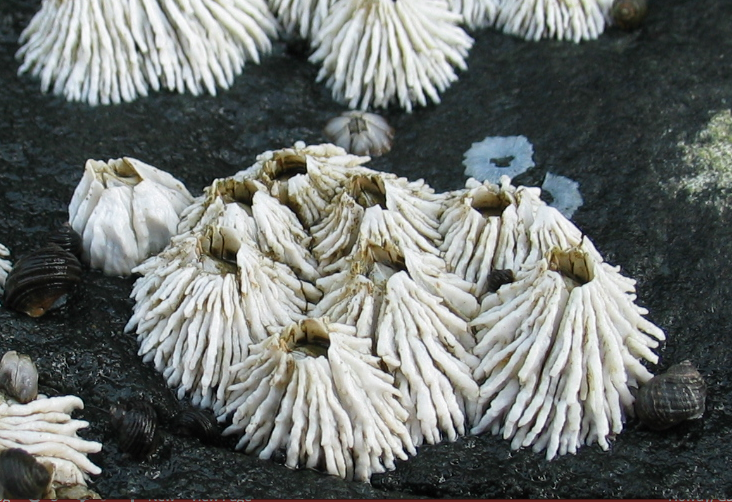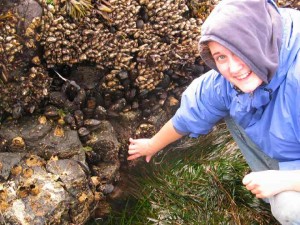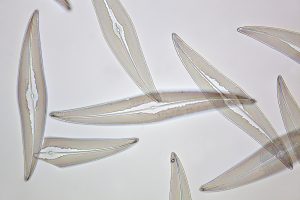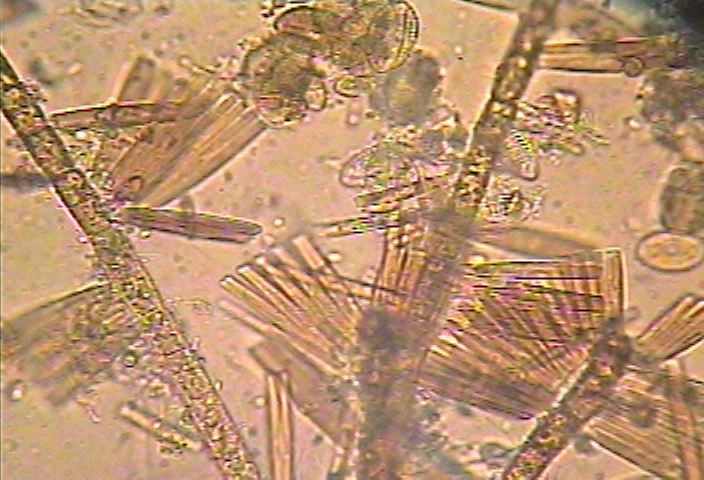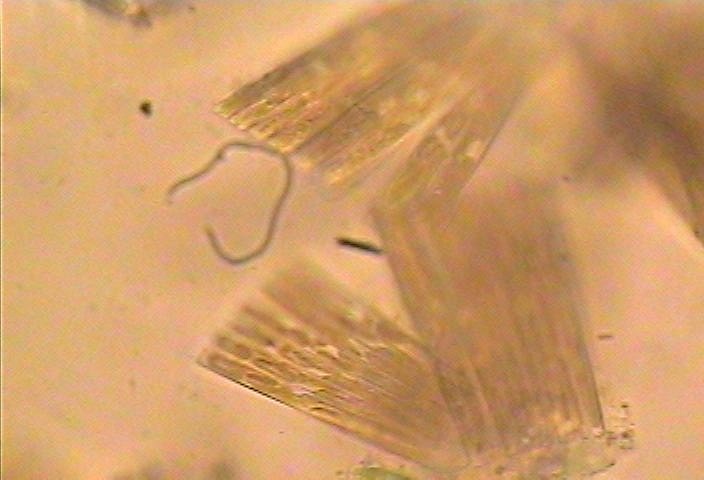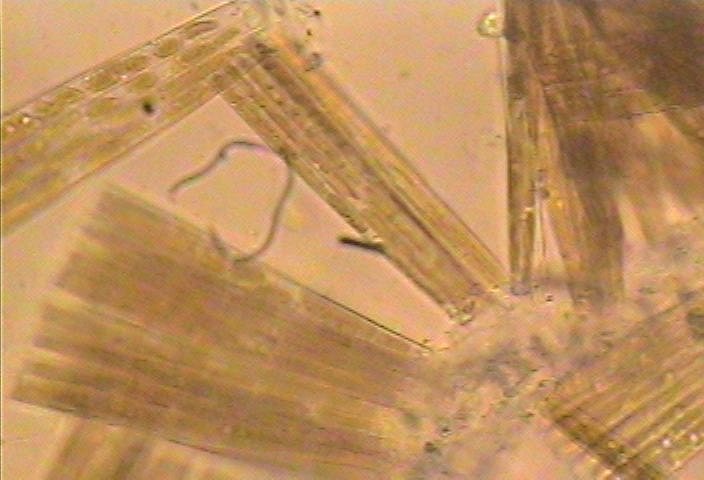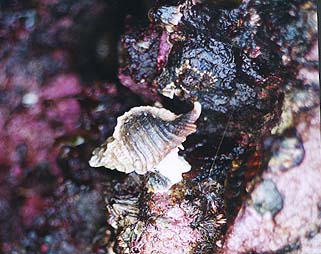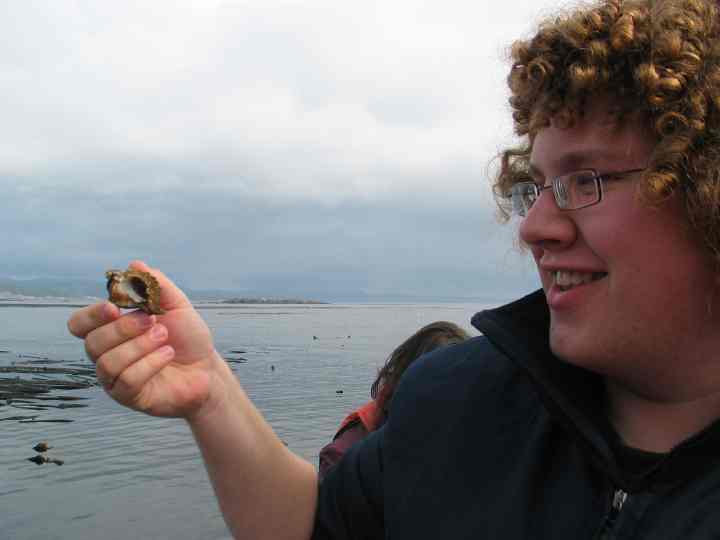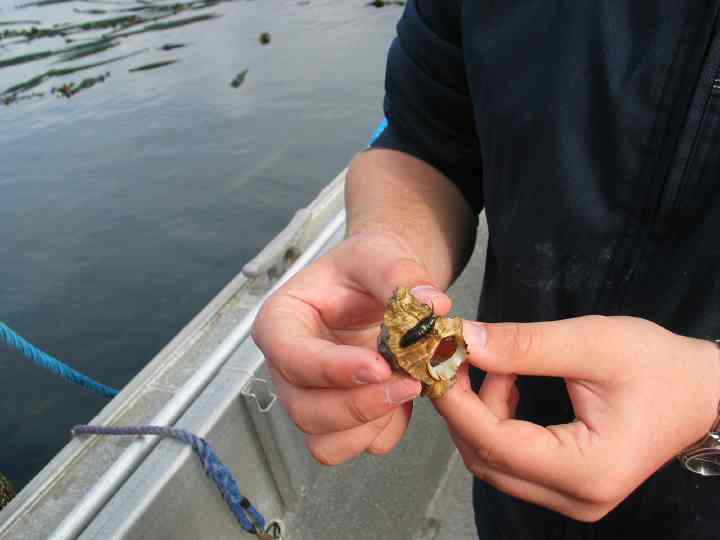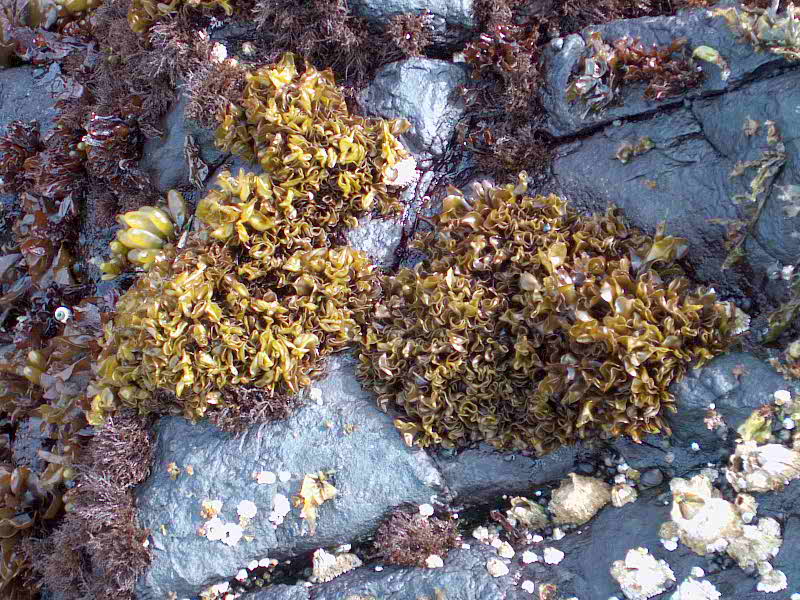Thatched barnacles are at a relatively low level in the intertidal zone as can be sen in this photo of their habitat.
Domain Eukarya
Kingdom
Phylum
Class
Order
Family
Genus Semibalanus
Species carriosus
Common Name: Thatched barnacle
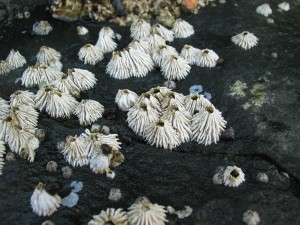
Other Members of the Phylum Arthropoda at Race Rocks.
and Image File |
 The Race Rocks taxonomy is a collaborative venture originally started with the Biology and Environmental Systems students of Lester Pearson College UWC. It now also has contributions added by Faculty, Staff, Volunteers and Observers on the remote control webcams. The Race Rocks taxonomy is a collaborative venture originally started with the Biology and Environmental Systems students of Lester Pearson College UWC. It now also has contributions added by Faculty, Staff, Volunteers and Observers on the remote control webcams. |

